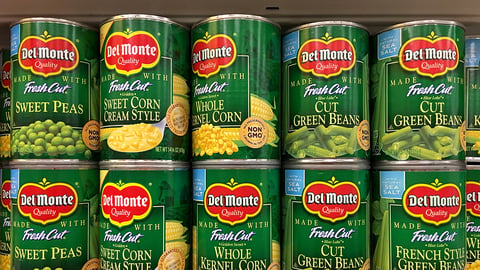Beyond the Checkout: How Fast Delivery Is Redefining Retail Supply Chains
The rise of e-commerce has brought significant changes to retail, increasing both revenue opportunities and complexity in logistics and delivery. To make future-proof investments, retailers and CPGs need to understand consumer and industry trends impacting their supply chain as well as existing brick-and-mortar stores.
Modern consumers have grown accustomed to the convenience of having a wide range of products available for delivery, especially fast delivery. According to a study from McKinsey, about 1 in 20 online shoppers expect same-day delivery options when shopping online in the U.S., a number that is poised to grow in the coming years. The pandemic has further cemented online shopping as a norm, creating a consistent demand for efficient fulfillment methods.
Delivery Options for Consumers in 2024
Consumers today expect a variety of delivery choices, including standard 2-3 day delivery, rush 1-2 day delivery, same-day delivery, and sometimes even 1-4 hour delivery. While the majority of e-commerce volume is still handled via services like UPS ground shipping (2-3 day delivery), recent consumer trends indicate a shift toward faster delivery demand that is putting a new focus on retail stores.
Companies like Uber, DoorDash, and Instacart have traditionally serviced restaurants and grocery chains through their app marketplaces; however, in recent years, all three have vertically expanded into categories such as home and furniture (example: Ace Hardware), health and beauty (Sephora and Ulta Beauty), or office supplies (Office Depot). Consumers are now able to get beauty or office products delivered as fast as they would their dinner, creating higher expectations for e-commerce fulfillment for retailers across all segments.
On top of their marketplaces, these delivery companies also expanded into a white-label last-mile offering, delivering orders for retailers that are not placed via the DoorDash or Uber marketplace but rather the native app or website of the retailer. If a consumer selects same-day delivery at a given retailer, the white-label service will fulfill the order from the selected nearest retail store. With consumers having many options to get their merchandise fast, either via the retailer's website directly or third-party apps, the expectation for same-day delivery, and faster delivery in general, is becoming normality.
Retailers Use Same-Day Delivery to Their Advantage
From the perspective of retailers, offering same-day delivery satisfies consumer demand and helps with store-level inventory turnover, but it is also costly to implement and operate.
However, many retailers, including Walmart, have seen great success with offering last-mile delivery exclusively to consumers as part of their loyalty program, further enhancing consumer retention while also increasing recurring revenue for the business. Other retailers require a minimum order spend, sometimes as low as $25 for Amazon, or have an extra fee applied at checkout. With studies showing that up to 24% of shoppers abandon their carts if delivery time is too long, providing multiple delivery options is crucial for retaining consumers and driving sales.
The Future of Retail and Delivery
Looking ahead, three main developments are anticipated in retail. First, while e-commerce is expected to continue to grow at a steady pace, it is currently hovering around 16% of total retail sales, according to Statista. Physical stores will continue to be an essential part of retail, serving as micro-fulfillment centers and interactive spaces for consumers. This means that brick-and-mortar stores are not disappearing but are evolving in their role as essential assets for retailers.
Second, the pressure to provide fast and cost-effective delivery will push retailers to invest in supply chain projects. Most major retailers have already partnered with multiple delivery providers who can deliver parcels from stores at scale at economical pricing. However, how to distribute inventory optimally between warehouses, fulfillment centers, and stores — and how to complement traditional shipping with same-day delivery — are unique challenges every retailer must solve.
Third, retailers will have to win over consumers and retain them with fast and reliable delivery options that are affordable and convenient. Fast delivery has become a major differentiator in retail so offering same-day delivery as part of a loyalty program or minimum purchase amounts will help draw customers to a retailer’s website.
Tobias Waldhecker is the senior manager of strategy at Walmart. He is a business and strategy professional with over 10 years of experience across engineering, consulting, and supply chain functions. For the past year and a half, he has led efforts for the strategy team at Walmart U.S. to develop and commercialize advanced logistics and supply chain products for increased efficiency and customer experience.




